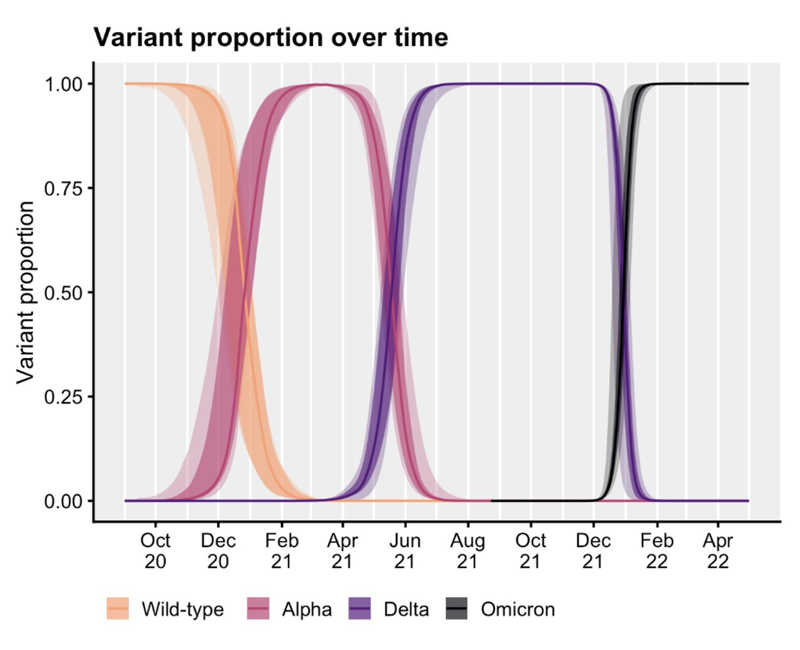
23rd December 2021 A vaccine against multiple variants of COVID-19 A new vaccine for COVID-19, using a multi-faced nanoparticle, could offer protection against many different strains of the virus simultaneously. The news has been filled with doom and gloom lately, as the latest variant of COVID-19, called Omicron, becomes dominant in many countries. This follows the previous Delta variant, which followed earlier strains such as Alpha, which derived from the original "wildtype" virus. As 2021 draws to a close and the world prepares for yet another year of the pandemic, many people are understandably anxious and weary. There is reason for optimism, however. Scientists are now talking about a pan-coronavirus vaccine development strategy, to offer protection from all current and even future variants of COVID-19. Last week, the U.S. National Institute of Health published a commentary in The New England Journal of Medicine calling for such an approach, as a way of breaking the cycle of new strains emerging.
In separate but related news, the Walter Reed Army Institute of Research (WRAIR) has been developing a new nanoparticle vaccine platform designed to protect against a wide array of SARS-CoV-2 variants. Pre-clinical studies, published this month in Science Translational Medicine, indicate that the vaccine protects non-human primates from disease caused by the original strain of SARS-CoV-2 and induces highly-potent and broadly-neutralising antibody responses against variants of concern. This includes the SARS-CoV-1 virus that emerged back in 2002. The first human trials are now undergoing final review. Early analyses of this Phase I data, expected to conclude this month, will provide insights into whether its potency and breadth, as demonstrated in the pre-clinical trials, will carry over into humans. The data will also allow researchers to compare the immune profile to that of other COVID-19 vaccines already authorised for emergency use. Spike Ferritin Nanoparticle COVID-19 vaccine (or SpFN, as it is known), presents a fragment of virus to the immune system to elicit a response. It consists of coronavirus spike proteins attached to a ferritin protein nanoparticle. Players of tabletop board games might be familiar with many-sided dice. Like the ones pictured below, SpFN has 24 sides, making it possible to attach spikes from many different coronavirus strains on the faces of the protein simultaneously.
"The accelerating emergence of human coronaviruses throughout the past two decades and the rise of SARS-CoV-2 variants, including most recently Omicron, underscore the continued need for next-generation pre-emptive vaccines that confer broad protection against coronavirus diseases," said Dr. Kayvon Modjarrad, Director of the Emerging Infectious Diseases Branch at WRAIR, co-inventor of the vaccine and the U.S. Army lead for SpFN. "Our strategy has been to develop a 'pan-coronavirus' vaccine technology that could potentially offer safe, effective and durable protection against multiple coronavirus strains and species." Since the Omicron variant is very new, having only been named by the WHO on 26th November 2021, it did not feature in the earlier animal studies. However, scientists at the WRAIR are now testing the strain in the lab against human clinical trial samples, using "neutralisation assays" to see whether antibodies can inhibit the growth of the virus. "We want to wait for those clinical data to be able to kind of make the full public announcements – but so far, everything has been moving along exactly as we had hoped," said Modjarrad. The platform also has advantages as a potentially global vaccine because it remains stable at a wide range of temperatures. This would be especially useful in settings where ultra-cold freezers are scarce. "This vaccine stands out in the COVID-19 vaccine landscape," Modjarrad concluded. "The repetitive and ordered display of the coronavirus spike protein on a multi-faced nanoparticle may stimulate immunity in such a way as to translate into significantly broader protection. We decided to take a look at the long game, rather than just only focusing on the original emergence of SARS, and instead understand that viruses mutate, there will be variants that emerge, future viruses that may emerge in terms of new species. Our platform and approach will equip people to be prepared for that." "The threat from COVID-19 continues as it evolves, and eventually there will be other emerging disease threats," said Dr. Nelson Michael, Director of the Center for Infectious Diseases Research at WRAIR. "Our investment in developing a next generation vaccine is an important step towards getting ahead of COVID-19 and future disease threats."
Comments »
If you enjoyed this article, please consider sharing it:
|








